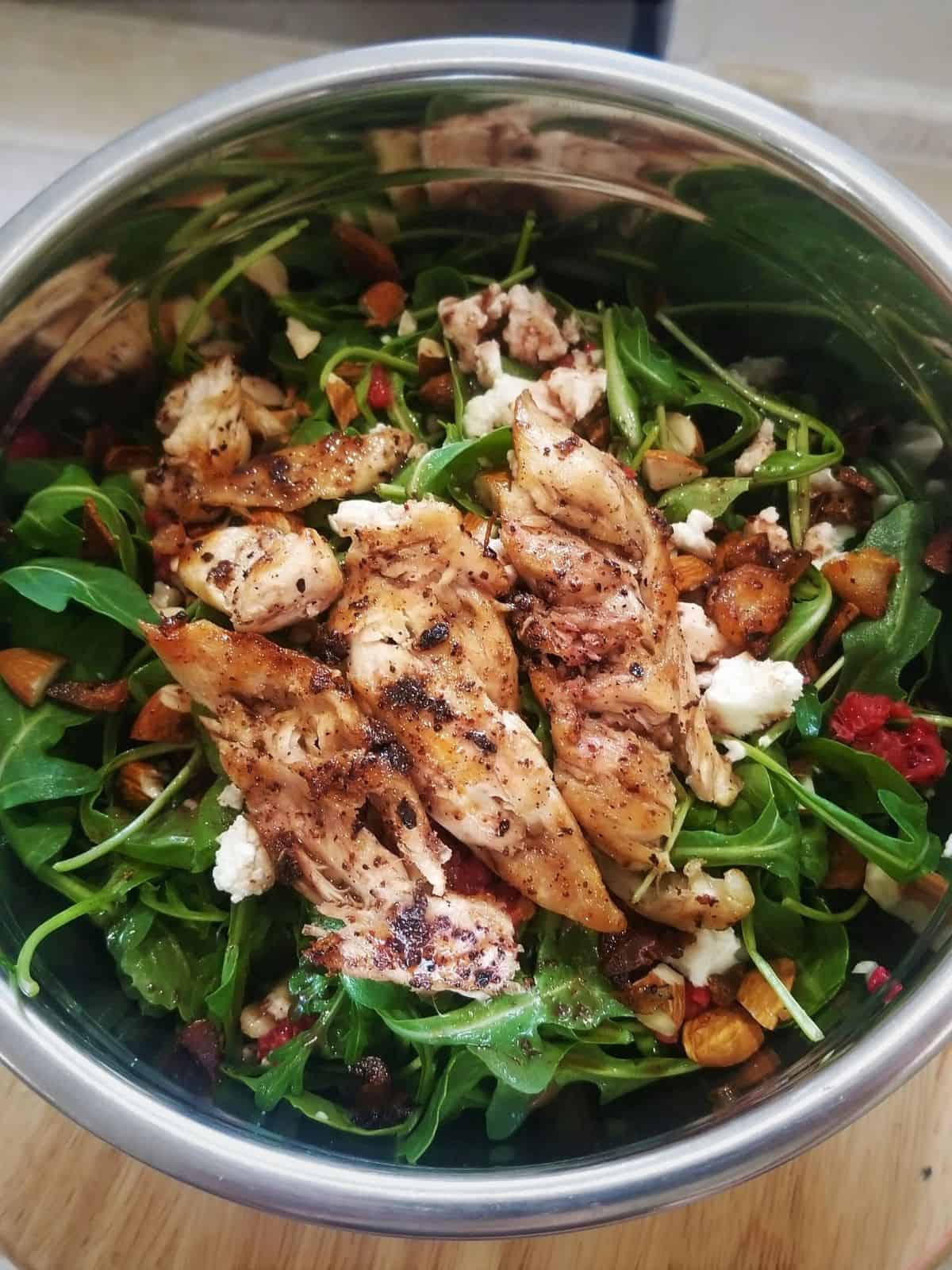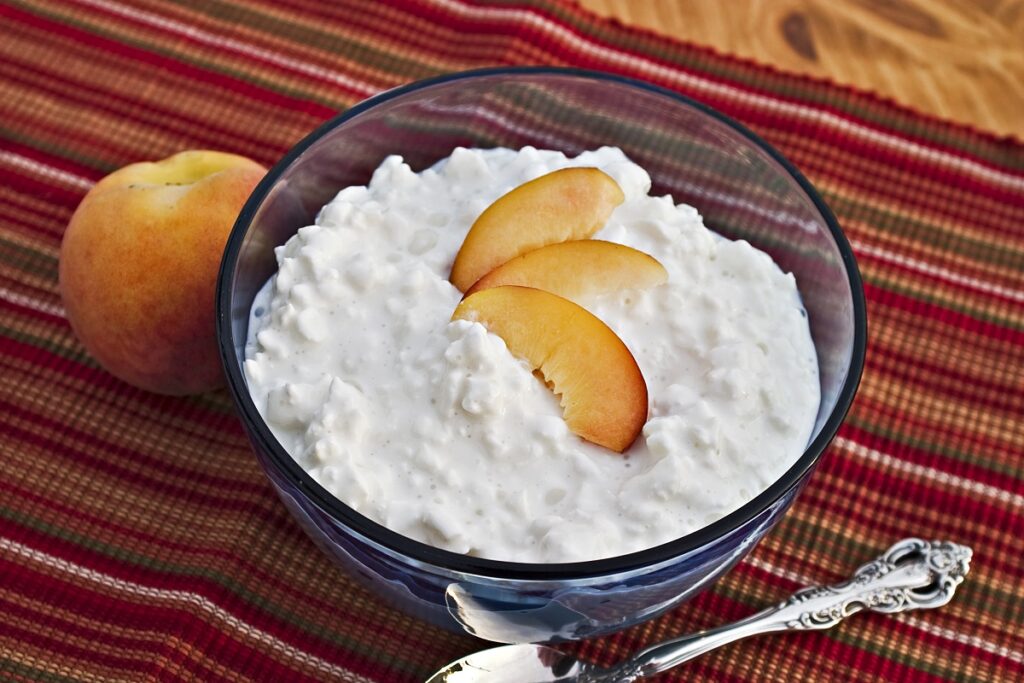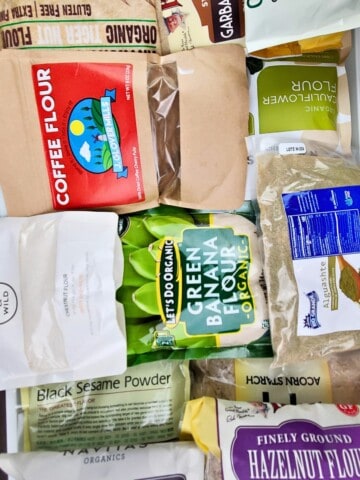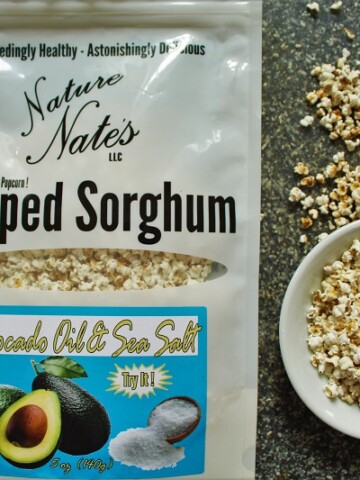When it comes to low histamine cheeses, the key to tolerating more options is the same as with all other low histamine foods: freshness. That's right! There are a few low histamine cheese options out there.
Most of them are made with the addition of some kind of acid rather than introducing a bacteria, usually made using vinegars or even lemon juice. However, most cheeses are fermented and aged, so most are considered high histamine ingredients.
Additionally, many people react badly to dairy early on in their diet, as processed forms of dairy can be inflammatory and lactose intolerance is common (I myself am lactose intolerant). It's for these reasons that I'm a huge advocate of taking charge of your own health.
Try your best to understand what's actually going on in your body rather than totally handing off your care to someone else. Take the time to learn your own triggers and limits so that you can safely eat (or avoid) foods like the low histamine dairy below.
Note that this cheese list only contains low histamine ingredients, but most people will still have a few random foods they know trigger a reaction and will need to avoid regardless of histamine content.
Medical Disclaimer: as with everything on this site, this article is provided for information only. I strongly urge you to speak with your doctor or a licensed medical professional in order to assess whether or not you have histamine issues, and/or which foods cause a histamine release for you personally. Every body is different, and some people will tolerate different foods than you do. Please keep comments respectful.

Jump to:
❓ Why Is Some Cheese High Histamine?
Cheese is a fermented dairy product, and during the fermentation process, the bacteria introduced tot he milk naturally produce histamine. This is the same histamine that's both a hormone and neurotransmitter, involved in the immune response and released by cells in response to an injury or allergen.
The histamine levels in cheese can vary depending on the type of cheese, the production process, and the aging time, as well as any other ingredients used. Generally, aged and fermented cheeses have higher levels of histamine compared to fresh cheeses.
This is because histamine also accumulates over time as the cheese undergoes fermentation and ripening, as there's nothing present in the cheese that's able to break it down. Additionally, some types of bacteria used in the cheese-making process are known to produce higher levels of histamine than others.
For example, certain strains of lactic acid bacteria can produce significant amounts of histamine during cheese production. So just like with any other food, how a cheese is made, handled, and stored will affect its histamine level.

📝 Tips to Choose Cheeses Low in Histamine
If you're looking for low histamine cheese options, below I cover the 9 most common types of fresh cheeses you may be able to find in your area. When shopping for cheese, keep the following tips in mind to make sure you choose low histamine options.
- Look for fresh cheese varieties, like the ones below; the fresher, the better.
- Farmer's Markets are a good source for finding fresh, locally-made cheeses, and you can usually sample them before buying.
- Choose cheeses made from pasteurized milk, to reduce sharper flavors and potential bacterial exposure beyond what's needed to make the cheese.
- Don't store cheeses in the fridge for longer than a week or so, and consider freezing them within 2 days of opening the package (individual portions work great; smooth cheeses like goat cheese and mascarpone freeze best).
- Avoid cheese that has mold on the surface or throughout, like bleu cheeses.
- Like with all processed foods, the cheaper it is, the cheaper the quality (with precious few exceptions), so look for short ingredients lists and pay a little extra for higher quality.
- Check the ingredients list for any additives, flavorings, or preservatives that may trigger your symptoms.
- Special Note: unless labeled as 'lactose-free,' all cheese contains some level of lactose, and if you have a lactose-intolerance like I do (confirmed by an upper endoscopy), then you'll want to take a lactase tablet every time you have dairy.

🧀 9 Low Histamine Cheeses
Fresh Cheeses
Fresh cheeses are an excellent choice for people with histamine intolerance, and can even be made at home. One such example is a homemade paneer. These cheeses are typically made with milk that has been recently curdled and has not undergone any aging processes.
However, note that this is not the same as queso fresco, a common name for popular fresher cheeses consumed throughout Latin America, but which are often still aged or fermented to some degree (especially if imported or purchased in a supermarket).
Cream Cheeses
Cream cheese is a versatile cheese that's popular and easy to find in most parts of the world. It has a soft and smooth texture and a mild, tangy flavor, made by blending milk and cream with lactic acid bacteria (so look for fresher cream cheeses with a far-off expiration date).
Cream cheese can be found in grocery stores and in specialty cheese shops if you're located in hotter climates or parts of Asia. Cream cheese is commonly used in low histamine cooking as a spread, a base for dips, or as an ingredient in desserts like cheesecake or a frosting for cake.

Mascarpone Cheese
Mascarpone is an Italian cheese that has a creamy, buttery texture and a mild flavor. It's made by curdling cream with citric or acetic acid (like those in citrus fruits), and often used in desserts like tiramisu.
But it can also be used in savory dishes like pasta sauces or as a topping for fresh fruit. This low histamine cheese can be found in specialty cheese shops and some grocery stores, but tends to be a bit harder to find than others.
Fresh Sheep's Milk Cheese
Fresh sheep's milk cheese is similar in texture and taste to fresh goat cheese, but with a slightly richer and creamier flavor and a bit more funk. It's made by curdling sheep's milk with an acidic agent, similar to goat cheese.
Fresh sheep's milk cheese can be found in some specialty cheese shops, but is rarely available in grocery stores. It's often used in salads, sandwiches, or on pizza.
Fresh Goat Cheese
Fresh goat cheese, also known as chevre, has a tangy flavor and a creamy texture. It's made by curdling goat's milk with an acidic agent, and tends to be well-tolerated by those who otherwise tolerate dairy.
Fresh goat cheese can be found in specialty cheese shops and some grocery stores. It's often used in salads, on pizza, or as a spread on crackers or bread.

Ricotta Cheese
Ricotta is a fresh cheese with a mild, slightly sweet flavor and a smooth texture. It's made by reheating the whey left over from making other cheeses, such as mozzarella or provolone. Ricotta can be found in most grocery stores, as it's most often used in pasta-based Italian dishes like lasagna, stuffed shells, or cannoli.
Cottage Cheese
Cottage cheese is a high-protein fresh cheese with a mild, slightly tangy flavor and a lumpy texture. Similar to cheese curds, it's made by curdling milk with an acidic agent, and then draining off the whey.
Cottage cheese can be found in most grocery stores, as it's become popular in recent years as a snack for those trying to build muscle or stick to a keto diet. Thankfully there's also often an organic version available, though remember not to leave it in the fridge for too long.

Mozzarella Cheese
Mozzarella is a mild and stretchy cheese with a slightly sweet flavor, and is arguably the most popular cheese in America. It's often used shredded on pizzas or in salads, or as thick slices in sandwiches.
Mozzarella is made by curdling milk with rennet (animal bacteria), and then stretching and shaping the curds into balls or blocks. This cheese may be the easiest to find, too, as it's available in most grocery stores and all specialty cheese shops.
Cheese Curds
Cheese curds are small chunks of fresh cheese that have a mild, slightly tangy flavor, and a firm texture. They taste most similar to mozzarella cheese, and are made by curdling milk with an acidic agent and then draining off the whey.
Cheese curds can be found in specialty cheese shops and some grocery stores, particularly in Canada and the Northern US, as well as any other areas where cheese curds are particularly popular.

🚫 High Histamine Cheeses
Some types of cheese have higher levels of histamine and should be avoided by people with MCAS or histamine intolerance. These mostly include hard cheeses (basically anything aged, such as parmesan or gouda), but moldy and processed cheeses can also pose a problem.
- Blue Cheese - a moldy cheese that's common in salads and dressings.
- Parmesan Cheese - one of the most popular for topping pastas, parmesans are usually aged for at least a year.
- Roquefort Cheese - a French cheese that's made from sheep's milk.
- Processed Cheeses - American Cheese Slices, Velveeta, etc. are all so heavily-processed and stored for long periods of time that they tend to build up high levels of histamine.
- Gouda Cheese - a hard cheese that's often aged for several months, and comes in several varieties.
- Cheddar Cheese - possibly the most popular cheese in the US, just behind mozzarella, cheddar is aged and often for along period of time, making it unsuitable for a low histamine diet.

















Andy Bennett says
Hi
Since I have been sensitive to carbohydrates I have been reading a lot of small print on packaging. I noticed that the carbs and sugars levels on lactose free and ordinary diary products are generally exactly the same. How can this be iIwondered, since its pretty much only lactose that is the sugar in milk, and thus lactose free products ought to have lower levels of both sugars and carbs. Not so. I was in contact with the big national dairy coop here in Norway - Tine. They informed me that lactose free products are not actually free of lactose. They just add an enzym so intolerant people can digest the lactose in the product. Check it out.
Max says
Oh my! I didn't realize that - I drank milk by the gallon as a child, but haven't been a milk drinke rin quite some time. Thank you for sharing. As someone whose sister has a lactose allergy, this seems like something people should be told when sold a 'lactose-free' product!
Sheila says
Hi..so happy I found your site! I'm super new to this histamine intolerance problem!
PLS tell me what is your bread recipe or brand of choice!? Or maybe you have 3-4?
Max says
That warms my heart, Sheila! Thank you for the kind words - I have a list of LH bread brands I enjoyed before I went grain-free here: https://lowhistamineeats.com/low-histamine-breads/
But now that I primarily eat grain-free, I maintain my favorite bread substitutes/swaps here (all gluten-free, mostly grain-free): https://lowhistamineeats.com/gluten-free-bread-substitutes/
Kathleene Parker says
By the way, PLEASE don't tell people to "consult their doctors!" I walked around for 31 years with ADVANCED pernicious anemia as I trooped from one incompetent doctor to the text, including two of this nation's "premier" clinics with no diagnoses. I was "diagnosed" only because of a chance viewing of a TV show on P.A. Of note, upwards of 85 percent of those with P.A. (mostly of European ancestry) go undiagnosed for 10 YEARS OR MORE AND THEN ARE "DIAGNOSED" NOT BY DOCTORS but by chance encounters like my own. From my experience, most doctors today are still pretending like its 1980 and have no knowledge of the human microbiome, histamine problems or even what potentially FATAL disease, like P.A. are--and, no, P.A. is NOT a neurological disease, it's the 4th most deadly autoimmune disease on the planet! I certainly would trust NO DOCTOR in my state to accurately advise me on histamine problems!
Max says
That sounds like an awful experieince you've been through, and I am so glad that you finally got yourself the diagnosis you needed to move forward - pernicious anemia is indeed an awful illness to be going through, and my heart goes out to you. But quite honestly, I legally NEED to remind people every chance that I get that I an NOT a doctor. I would never want anyone blindly following my research and experience as a patient, without having someone (ideally intelligent and empathetic) who's able to be their medical representative and help them make decisions which, quite frankly, I cannot and should not be making for them.
On the other hand, I've been where you are and agree that our medical system as it is is REALLY hard to navigate unless you already have a diagnosis. It's set up to check if you fit the criteria of already being sick and to put you in the appropriate bucket so that they can give you the 'magic pill' that will help you manage symptoms. It's not focused on the emerging inflammatory diseases that are becoming increasingly common, and it's for that reason that I've continued to keep this site online and build it as a resource for people in the same position as you and me, without trying to sell some kind of course, supplement, or magic answer that will make things normal again (as much as we wish there were such a thing). So I see where you're coming from with your comment, but as a non-medical professional, I need to make sure I'm helping people in the ways I'm able and qualified to, without anyone feeling misled.
Kathleene Parker says
This is so a matter of what the individual can tolerate. I (long with UNDIAGNOSED pernicious anemia and its evil stepbrother allergic gastritis and PERCEIVABLE high histamine levels) have particularly missed cheeses because of my limited diet, and they had always been a great "emergency" snack food. To my amazement, I have discovered, while most other cheeses are out of the question, I do fine on Brei cheeses, particularly from goat or sheep's milk which offers the argument that they are more helpful in supporting mitochondrial DNA. I keep the quantity low, but wow, what a treat!
Max says
Absolutely a personal things, but it can be really helpful to have some parameters to rely on, especially when you're just starting out amd have no idea where to begin. I'm glad you've found something that works for you, and supports you with what you need (not to mention being delicious)!
Kate says
What about Haloumi?
Max says
Haloumi is a lot more aged & brined, so I wouldn't think it's low in histamine, but if you do give it a try, please let us know how you do with it!
Dorothy Shi says
This was so helpful!
Max says
I'm glad you found it useful, Dorothy!
Christine says
Do you have any sense of the difference between fresh mozzarella and the kind that comes as a brick and can be grated? (Also, thank you for all the good info on your site—I seem to end up back here regularly and really appreciate it!)
Max says
Thank you for the kind words, Christine, and I'm glad you've been finding it helpful! I know that the brick kind is usually lower in fat, but the 'wet' kind has more water exposure and therefore potential bacteria exposure, though it may be markedly fresher. So while there are notable differences, it's hard to say which/if either would be lower in histamine. Honestly, personally I'd just buy one of each and try them a couple days apart to see which/if either is better for me.
Christine says
Just following up to say that the not-in-water mozzarella was NOT a winner for me, unfortunately! But I used it on pizza with your low-histamine dough and a cobbled-together red bell pepper marinara sauce, and the dough and sauce were great. Looking forward to trying the pizza again with fresh mozzarella.
Max says
That's such a pain! But I'm glad you have at least one option that works for you-- consider adding some fresh-chopped basil to the top once it comes out of the oven, too; that's always our favorite part of our summer garden (though you can get it at most grocery stores, too)!
Christine says
@Max, Thanks! I’ll give it a shot. I can eat the fresh mozzarella in water/oil, but being able to grate it on stuff would be handy…
Rochelle says
What did the mozzarella not in water do to you?
Linda Seidman says
My comment not on cheeses per se, but on oxalates. You don’t mention them much on your site. How are they related to HIT and MCAS?
Do they need to be avoided for histamine related issues, or just because oxalates can become problematic in general.
Thanks for all your fantastic information, Max!
I love love the fresh cheese list as a low histamine option for enjoying cheese. Yay!!!
Linda Seidman
Max says
Hi, Linda! You're right that I don't mention them much on my site, and that's mostly because I'm not that clear on the relationship between oxalate & histamine beyond some kind of inflammatory response connection. Oxalate can also just generally make nutrients less absorbable/bioavailable. I don't seem to be bothered by high oxalate foods, so between school and work and the site and wedding planning, I just have NOT had time to look into them any further, but because they do bother some people, I make an effort to include warnings where applicable. And yay!! I'm glad to help put a smile on your face; even just a few bites of favorite foods can be such a joy!
emma says
This is very helpful. Is feta cheese classed as low or high histamine? Thank you!
Max says
I haven't done much research into feta, but it's usually aged in a brine, so I'd guess high histamine or at least moderate. Fresh goat cheese might be the closest replacement.
Bob says
@Max,
Regarding feta, the SIGHI leaflet puts feta cheese in the category "Risky," which is in between "To avoid" and "Well tolerated."
By the way, I just discovered your website and I think it's a wonderful resource. I'm sorry to hear about your medical travails, and impressed with your taking such a proactive role in dealing with your medical issues.
Best wishes for continuing progress in your recovery and in your growing role in the war on HIT and MCAS.
Thanks for sharing.
Max says
Thanks, Bob! I'm only a couple months into my studies, but it really can't get more personal than this. I'm looking forward particularly to future classes which will allow me to work on papers about HIT and MCAS, though I'm already aware of the paltry research materials available. Hopefully I can do something to change that! All things in due time...
Ines says
Great and helpful article! I love cheese and I always wondered which ones are "low danger" but didn't want to risk. I was just sticking to cottage cheese, so I am happy to expand the list, thank you!
Max says
It's my pleasure, Ines! I'm a big cheesehead, myself, so learning that my main issue with dairy is lactose-intolerance has hugely widened my options. Happy to do the same for someone else! <3